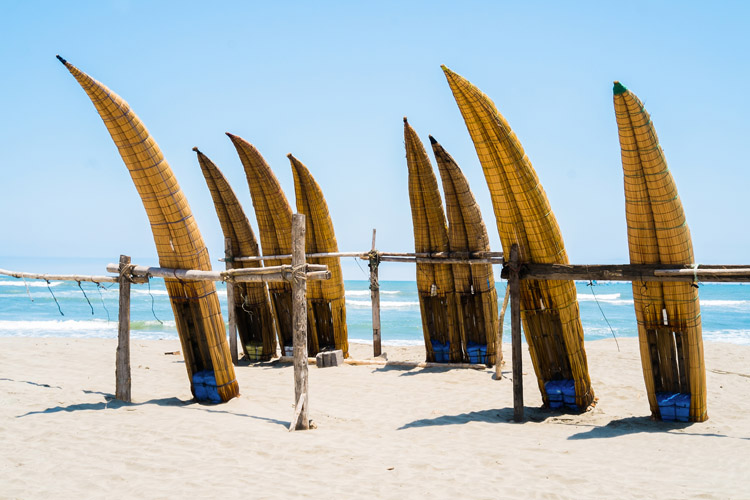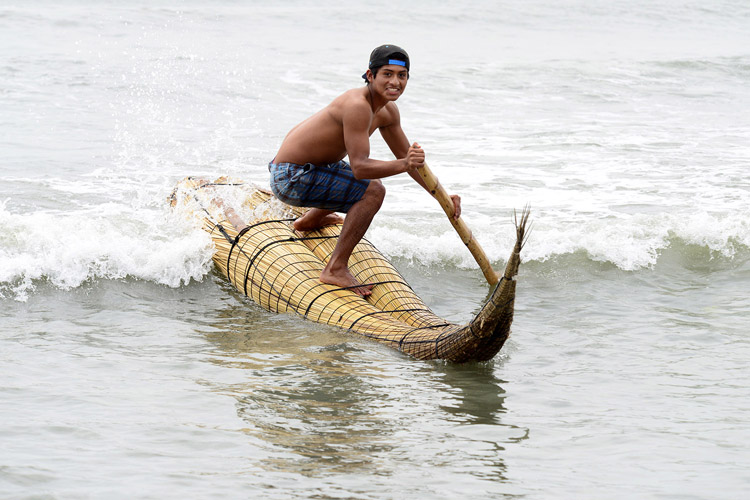Caballito means "little horse" in Spanish; "Totora" is a South American plant. Archaeological evidence suggests that this ancient watercraft is the world's first surfboard.
A Caballito de Totora is a small, woven reed vessel with an elongated design that Peruvian fishermen have used for more than 4,000 years.
Rock art paintings, pottery shards, and other Inca artifacts reveal that wave riding is an age-old practice and that the first form of surfing derives from fishing.
The 12-foot, one-person watercraft weighs around 90 pounds and can be built in two hours. However, the dried Totora stalks begin to decompose a month and a half after intense use in the water.
After laying the fishing nets and dropping the lobster traps, fishermen return to the beach and ride the waves with the Caballito de Totora in a standing, kneeling, or sitting position.

Fun and Work
Historians believe that coastal communities have always used the reed watercraft for professional and recreational purposes.
Peruvian surf legend Felipe Pomar has no doubts: surfing was definitely born in Peru with the Caballitos de Totora.
The winner of the 1965 World Surfing Championships defends the theory that contrary to popular belief, the act of riding waves didn't start in the Polynesian islands.
"While there is much room for speculation, there seems to be a distinct possibility that the embryonic form of modern-day surfing was born off the coast of northern Peru," Pomar stated in 1987.
The historic surf town of Huanchaco, in Peru, is the home of Caballitos de Totora.
In 2013, it was named a World Surfing Reserve, and the region has been increasingly highlighted as the birthplace of surfing.
In Huanchaco, the ancient surf craft is pretty much everywhere, and tourists are invited to try it in the real surf, just like fishermen did in the pre-Inca period.
